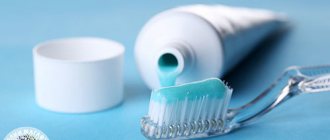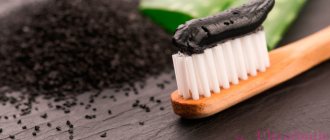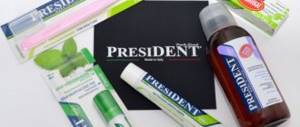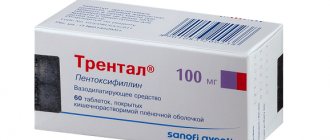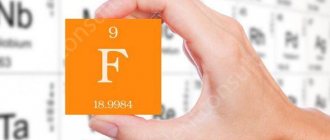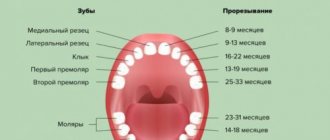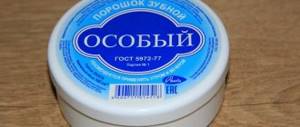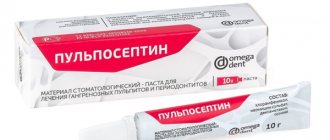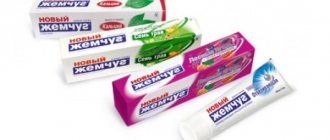Toothpastes were the result of improvements and improvements in tooth powders. Since the end of the 19th century, the world began to switch to toothpastes in tubes, which in most countries of the world came into use in the 30s of the 20th century and gradually began to replace tooth powders. The pastes have undeniable advantages - compactness, portability, plasticity, better taste. The approximate composition of traditional hygienic pastes included chemically precipitated chalk (23-43%), glycerin (10-33%), sodium carboxymethylcellulose (1-1.8%) , perfume oil (1 -1.5%), sodium lauryl sulfate, fragrance, water, preservative. Over time, active substances with therapeutic, prophylactic and medicinal properties began to be added to pastes.
Types of toothpastes
Manufacturers vying with each other to advertise their product, promising the consumer a snow-white smile and a healthy mouth. Surely the properties stated in the advertisement do exist, but you need to understand in what situation. Each type of paste has its own purpose and is applicable in a specific case. It is unlikely that whitening powder will help you if you are actively developing caries. To know how to choose the right toothpaste, you need to have an idea of what types it is in principle.
Hygienic
Designed to maintain a healthy oral cavity - cleans teeth from food debris, freshens breath, helps remove plaque. Hygienic pastes do not contain active ingredients that fight various diseases (caries, periodontal disease, etc.). This option is perfect for people who regularly make preventative visits to the dentist and do not forget to brush their teeth daily.
Whitening
The name already makes it clear what these toothpastes are intended for. They affect tooth enamel, polishing it and brightening it by 1-2 tones. Chemical reagents, abrasive materials (mechanical bleaching) or a combination thereof are used as the main active substance. Whitening toothpastes are not recommended to be used constantly - they should be alternated with hygienic and other ones.
Treatment and prevention
Toothpastes of this type help fight not only plaque and bad breath, but also various diseases - caries, periodontitis, gum disease, etc. They contain active ingredients that will differ depending on the purpose of the paste:
- Anticarious – contain calcium, fluorine and phosphorus. They help prevent caries, but may be useless if the disease is already advanced. In this case, only the intervention of a dentist will help;
- Anti-inflammatory – contain essential oils and extracts of medicinal plants (chamomile, oak bark, sage, etc.). They cope well with gum inflammation and unpleasant odor, but are not recommended for frequent use - precisely because of the strong activity of the components;
- Saline - contain various mineral salts. They have a positive effect on the gums and help with diseases such as periodontal disease or periodontitis. Very useful for the prevention of tartar, but have a specific taste;
- Organic (biological) – contain natural ingredients. Safe for both adults and children - thanks to 100% natural ingredients. They have shown themselves to be effective in preventing various diseases, but their cost is quite high.
To know for sure which toothpaste to choose, it is best to first consult a dentist. After a complete examination of the oral cavity, you will know exactly what problems you have and what products you need to use.
Toothpastes are divided into groups:
— for daily use — anti-caries (adults and children);
- antiplaque – preventing the formation of tartar (preventive);
- preventing the formation of dental plaque;
- whitening;
-desensitizing pastes for sensitive teeth.
The purpose of toothpaste is to perform hygienic procedures in the oral cavity, that is, cleansing the teeth, gums, interdental spaces, tongue from food debris, soft plaque, mucus, removing dental plaque and preventing microbial contamination.
Toothpaste is a complex system that includes abrasive, moisturizing, binding, foaming, surfactant components, preservatives, flavoring agents, water and therapeutic and prophylactic elements. Their ratio determines the properties, mechanism of administration, action and effectiveness of the pastes.
The polishing agent ranges from 20%-40%, determines the abrasiveness of the paste, and is necessary for polishing the surface of the teeth, removing soft plaque and food debris. Abrasiveness (RDA) depends on the size of the particles included in the polishing component of the paste: Ca carbonate, Na bicarbonate, aluminum hydroxide, etc.
Humidifying agents help maintain the homogeneity of the paste and prevent water evaporation. Glycerin and sorbitol are mainly used as humectants.
The binder (resins obtained from plants and algae) makes up 1%-5% of the total composition, holds all the components of the paste together and prevents them from separating.
Detergents (foaming agents) from 1%-2% - sodium lauryl sulfate promotes the formation of foam and facilitates the cleaning abilities of the paste.
Preservatives (antimicrobial components) are necessary to combat pathogenic microflora of the oral cavity; they also prevent the proliferation of microorganisms in the paste itself: alcohol, benzoate, formaldehyde.
Fragrances (flavoring fillers) are needed in the paste to improve the taste: menthol, mint, vanillin, eucalyptus, etc.
Water is one of the fundamental components of toothpaste, binds all ingredients, makes up from 20% -30%
Gel-forming substances determine viscosity and plasticity. Hydrocolloids: Sodium alginate and sodium carrageenate, obtained from seaweed.
Enzymes - destroy organic plaque, papain, pancreatin, hydrolyze proteins, dextranase, etc.
Vitamins: B3 -1-3%; B6 – 0.1-4.5%; RR – 0.5 -1.5%; C -0.5 -2%; K – 0.2 -0.4%
Anti-caries treatment and prophylactic toothpastes contain fluoride components - these are Blenda-a Med, Colgate, Aquafresh and other pastes. Blendax “Mountain Herbs”, the composition of which is supplemented with extracts of lemon balm, sage, chamomile, rosemary. For teeth with increased sensitivity to cold, sour, sweet foods, there are special pastes that contain potassium salts (Lacalut Sensitiv, Oral B Sensitiv, etc.) One of the most effective pastes for sensitive teeth is Sensodyne F.
Anti-inflammatory pastes include pastes that contain antiseptics such as chlorhexidine Lacalut active, Elgidium, triclosan - “New Pearl Total”, Macleans, President in addition to the antibacterial component hexitidine, contain herbal extracts and propolis. Parodontax F helps strengthen gums thanks to the unique composition of medicinal herbs. For lovers of a snow-white smile, there are whitening pastes: Colgate White, Rembrandt White and others. You can use such pastes no more than 2-3 times a week; they help lighten the enamel by 1-2 tones.
The correct selection of toothpaste helps to thoroughly remove soft plaque, polish the surface of the teeth, reduce the intensity of oral diseases and the appearance of a Hollywood smile.
Quantity
Children's toothpastes
They should be mentioned separately. Many people mistakenly fall for the advertising slogan “for the whole family” and buy one paste for everyone. This is a fundamentally wrong approach, since even adults will most likely have different dental problems. What can we say about children who require completely different useful components. Therefore, if the question of how to choose the right toothpaste for a child is relevant to you, then use our recommendations:
- Pay attention to the age markings applied by the manufacturer. Typically, children's toothpaste according to this parameter is divided into the following ranges: up to 3 years, 4–8, 8 and older;
- Don’t be fooled by the bright packaging and don’t be led by your child to choose a beautifully designed tube - it’s better to give him the opportunity to choose his own toothbrush (taking into account, of course, your opinion);
- Pay attention to the fluoride content. In large quantities, this component harms not only the teeth, but also the entire child’s body. For children under three years of age, the maximum percentage of fluoride content is 0.025%. You can also find the designation ppm (parts per million). In this case, the value should be no more than 250 ppm. For ages 4–8 years – no more than 0.05% (500 ppm), for older ones – up to 0.14% (1400 ppm);
- The abrasiveness index (RDA index) should not exceed 50. For children's teeth, it is better to choose a gentle cleaning mode. Of the active ingredients, it is better to give preference to silicon dioxide or titanium dioxide rather than the more aggressive calcium carbonate or sodium bicarbonate;
- Choose a paste with natural thickeners - most often it will be plant or seaweed resin. If possible, avoid synthetic components;
- Do not overdo it with dyes, sweeteners and flavor enhancers. Most often, artificial and/or sugar-containing components are used as such. It is necessary to minimize their number in the paste.
How to choose toothpaste for a child is a problem for every responsible parent. If you follow our simple tips, the negative impact of the components included in the paste will be minimized, and your baby’s teeth will delight you with their whiteness and health.
Ingredients contained in toothpaste
The main components are abrasives, humectants, fluoride and flavorings. One of the main roles is played by abrasive substances, since it is thanks to them that plaque is removed from the surface of the teeth. The most common are calcium carbonate, silicon dioxide and aluminum compounds. These abrasives remove plaque without damaging tooth enamel. Humidifiers in pastes are used to maintain the texture of the product. Almost all pastes contain sorbitol and glycerin. Thanks to these components, the paste has a smooth consistency and is evenly squeezed out of the tube. In addition, the paste contains foaming components that also help cleanse tooth enamel. Fluoride, contained in many toothpastes, reduces the risk of caries and also strengthens tooth enamel. Flavorings and sweeteners are added to toothpaste to give it flavor and a pleasant taste.
What to look for when choosing
First of all, you need to understand the current condition of your teeth. Therefore, before deciding which toothpaste to choose, you should visit your dentist. Perhaps everything is fine with you and a simple hygienic tube will be enough. But more often than not, problems still exist, and this cannot be done without the authoritative opinion of a dentist.
Carefully study the composition of the paste, especially if you are prone to allergies. If possible, you should choose products with a minimum content of preservatives and foaming components.
If you are planning to become the owner of a snow-white Hollywood smile, then remember that highly abrasive pastes will help with this, but using them for a long time is not recommended. You can, of course, whiten your teeth. But if you overdo it, you’ll simply damage the enamel, and it’s not far from caries or other diseases.
If there are obvious problems with the gums, preference should be given to anti-inflammatory pastes. They have a strong antiseptic effect, so alternate their use with more gentle formulations. These can be salt products.
Regardless of the condition of your teeth and oral cavity, do not forget to visit your dentist regularly. In this case, you will always be aware of your health, and the doctor, if necessary, will tell you which toothpaste to choose for your specific case.
Classification of teeth cleaning products
- Hygienic pastes designed to clean the surface of teeth from microbial plaque and freshen breath;
- Pastes with anti-inflammatory effect. They contain special medicinal herbs and are used as therapy in the treatment of periodontal diseases.
- Anti-caries drugs. Pastes with a high fluoride content can be used in combination with oral hygiene products to prevent caries.
- Antifungal pastes. Used as prescribed by a doctor to treat certain diseases of the oral cavity.
- Pastes with antimicrobial action. Used in a complex of treatments for the development of diseases of the teeth and gums.
- Pastes with whitening effect. This product contains abrasive particles that effectively remove plaque, but can damage tooth enamel. Therefore, such pastes are not recommended for constant use.
How to properly monitor your dental health?
The increase in the number of oral diseases among children and adolescents is a consequence of unsatisfactory oral hygiene, inability and ignorance of its role, lack of skills in carrying out personal hygiene measures in the oral cavity (and this is against the backdrop of large-scale advertising of smoking and drinking beer).
The general recommendation to brush your teeth twice a day no longer suits us; on the contrary, instead, it is necessary to take a separate approach to each individual person’s needs and draw up a plan of hygiene measures in accordance with those phenomena (inflammation of the gums, itching, ulcers, dental caries, increased sensitivity of teeth, bleeding gums, the presence of braces or implants, and other problems) that he has in his mouth.
Oral hygiene today
If thirty-forty years ago the domestic assortment was limited to two types of tooth powders, and the best thing that the country’s population saw in the 60s-70s was Pomorin toothpaste, now the situation has changed radically. There is an abundance of toothpastes and other oral hygiene products. Of course, the average consumer is not able to understand this diversity, the store salesperson also does not have the proper competence in this matter, it is also impossible to issue methodological recommendations for all occasions or describe all toothpastes. Therefore, the only real way is useful information received from a dentist or dental hygienist, and for this he himself must understand this issue. In order not to “drown” in the existing variety of toothpastes, you need to know what they consist of, a clear understanding of the composition, knowledge of the compatibility of components and the mechanism of action will make it quite easy and simple to understand existing toothpastes and navigate the newly emerging new products on the modern market oral hygiene products.
Such knowledge will allow you to correctly evaluate the information coming from the media about new “top” products and not “buy” into the obviously incompetent but loud statements of advertisers, and refrain from purchasing low-quality, if not harmful, products.
Do you really need to brush your teeth? And if necessary, then why?
The fact is that 1 mg of dental plaque contains from 5 to 8 million saprophytic and pathogenic microorganisms. Many microbes in the oral cavity secrete enzymes and strong toxins (poisons), which, acting on cells, destroy the gums. Our body cannot do without microbes, only they must be useful, such in medicine are called saprophytes. But there are also bad microbes, we call them pathogenic. These are the ones we are trying to get rid of.
A significant and important barrier to all bad microbes is oral hygiene and those preventive additives that are included in toothpastes and rinses. That is why it is so important how each of these pastes acts on bad microbes, on oral tissue. According to WHO statistics, 92% of the world's population do not know how to brush their teeth properly. This, in turn, explains our indifference to the state of our mouths, and this is why the issue of eliminating hygienic illiteracy acquires such importance.
